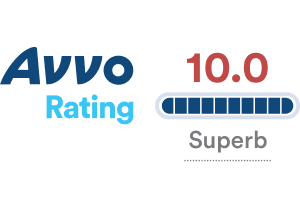Over 450 DWI Trials Since 2006
DWI Detection
The National Highway Transportation Safety Administration (NHTSA) is in charge of training officers throughout Texas and all 50 states. Before an officer can become “certified” to perform a DWI investigation, he or she must complete a comprehensive course taught by NHTSA instructors and pass certain proficiency exams. If an officer completes the course and exams, he or she is then “certified” to perform a DWI investigation.
The following is a brief overview of what officers are trained to look for when making a DWI arrest.
NHTSA specifies three (3) distinct phases in a typical DWI case. Those phases are:
- Phase One: Vehicle in Motion
- Phase Two: Personal Contact
- Phase Three: Pre-arrest screening.
Usually, all three detection phases of DWI should be observed prior to an officer making an arrest for DWI.
PHASE ONE: Vehicle in Motion
In phase one, officers are trained to observe a persons driving for possible clues of intoxication. Based on this observation, the officer must decide if there is sufficient cause to command a driver to stop. NHTSA trains officers to look for the following clues, among other, to justify a stop during phase one of a DWI investigation.
- PROBLEMS MAINTAING PROPER LANE POSITION
- Weaving-
- Weaving Across Lane Lines-
- Straddling A Lane Line-
- Swerving-
- Turning With Wide Radius-
- Drifting-
- Almost Striking Object or Another Vehicle-
- SPEED AND BREAKING PROBLEMS
- Stopping Problems (too far, too short, too jerky)-
- Accelerating or Decelerating Rapidly-
- Varying Speed-
- Slow Speed (10 m.p.h. + Under Limit)-
- VIGILANCE PROBLEMS
- Driving In Opposing Lanes or Wrong Way on One-Way Street-
- Slow Response to Traffic Signals-
- Slow or Failure to Respond to Officer’s Signals-
- Stopping in Lane for No Apparent Reason-
- Driving Without Headlights at Night-
- Failure to Signal or Signal Inconsistent with Action-
- JUDGMENT PROBLEMS
- Following Too Closely-
- Improper of Unsafe Lane Change
- Illegal or Improper Turn (too fast, jerky, sharp, etc.)
- Driving on Other Than Designated Roadway
- Stopping Inappropriately in Response to Officer
- Inappropriate or Unusual Behavior (throwing objects, arguing, etc.)
- POST STOP CLUES
- Difficulty with motor controls-
- Difficulty exiting the vehicle-
- Fumbling with driver’s license or registration-
- Repeating questions or comments-
- Swaying, unsteady, or balance problems-
- Leaning on the vehicle or other object-
- Slurred speech-
- Slow to respond to officer or officer must repeat commands-
- Provides incorrect information, changes answers-
- Odor of alcoholic beverage from the driver-
PHASE TWO: Personal Contact
Phase two of DWI detection is comprises of two major evidence gathering tasks and then a decision by the officer. The first task is the initial approach by the officer to the suspect’s vehicle. The officer should observe the suspect while he or she is still seating in their vehicle and note any face-to-face impairment. Also, the officer may administer simple pre-exit sobriety tests to gain evidence regarding the driver’s impairment. After this is done, the office must make a decision whether to request the driver to exit the vehicle and conduct further field sobriety tests.
The second task of Phase two is to observe the manner in which the driver exits and not any additional evidence of impairment. After this observation, the officer must then make a decision whether or not to proceed with a DWI investigation. If the officer chooses to proceed, a DWI interview will be conducted. This interview basically allows the officer to use his or her sense of sight, sense of hearing, and sense of smell to gather further evidence of impairment. The following are some of the many clues officers typically look for during the DWI interview in Phase two:
- SIGHT – Among the number of clues an officer might see during a DWI interview that would be clues or evidence of alcohol and/or dug influence are:
- bloodshot eyes;
- soiled clothing;
- fumbling fingers;
- alcoholic containers;
- drugs or drug paraphernalia;
- bruises, bumps or scratches;
- unusual actions.
- Hearing – Among the number of clues an officer might hear during a DWI interview that would be clues or evidence of alcohol and/or dug influence are:
- slurred speech;
- admissions of drinking;
- inconsistent responses;
- abusive language;
- unusual statements.
- SMELL – Among the number of clues an officer might smell during a DWI interview that would be clues or evidence of alcohol and/or dug influence are:
- alcoholic beverages;
- marijuana;
- “cover up” odors like breath sprays;
- unusual odors.
- PRE-EXIT INTERVIEW TECHNIQUES – Officers are trained to use “divided attention” techniques to gather evidence before and after a person exits the vehicle. These techniques are:
- asking for two things simultaneously;
- asking interrupting or distracting questions; and
- asking unusual questions.
PHASE THREE: Pre-Arrest Screening
In Phase three of DWI detection, officers perform a battery of three tests known as Standardized Field Sobriety Tests or SFSTs. There are three tests that comprise the battery of SFSTs. The first is a Horizontal Gaze Nystagmus (HGN) test. The second is the Walk and Turn (WNT) test. Finally, the last SFST is the One Leg Stand (OLS) test. These test are standardized which means that they must be performed in the proper manner with correct instructions or the validity of the test is compromised. Basically, is the officer does the test wrong, their own training manual says the test is compromised.
Test One: Horizontal Gaze Nystagmus
HGN refers to an involuntary jerking which occurs as the eyes gaze towards the side. Everyone has HGN, but, it is very difficult to see HGN with the naked eye. However, once a person introduces alcohol, depressants, or PCP (DIP drugs) into their system the HGN become more pronounced and can be viewed b the naked eye. Officers refer to the HGN test as “the most reliable” field sobriety test. Commonly, you will hear officers of prosecutors say, “the eyes don’t lie.” By this they are telling the jury that since HGN can’t be prevented or faked, if a person has HGN he or she must be impaired.
Administering HGN can be tricky for officers, especially new, poorly trained, or sloppy officers, because in order to be a valid test the officer must perform the HGN test in accordance with specific timing guidelines. When the HGN test is administered the officer will begin with the subject’s left eye and then the right. Each eye is examined for three specific clues:
- Lack of Smooth Pursuit – this occurs as he eye moves side to side and is present if the eye does not move smoothly or jerks noticeably.
- Nystagmus at Maximum Deviation – this occurs when the eye jerks as it is moved out as far to the side as possible.
- Onset of Nystagmus prior to 45 Degrees – this occurs as the eye is moved from side to side and is present if the eye jerks or doesn’t move smoothly prior to 45 degrees from the subject’s nose.
Note on Clues – Clues are indicators that an officer looks for during each of the SFSTs. Each SFST has a proscribed total number of clues. If the officer sees a certain number of the total clues on an SFST then, according to his or her training, a person might be intoxicated.
In regard to HGN, the maximum number of clues that may appear in both eyes are six (6), three (3) for each eye. Officers are trained that if four (4) or more clues are present on the HGN test then, according to their research, a person has a 77% chance of being legally intoxicated.
DIVIDED ATTENTION TESTS: Walk and Turn and One Leg Stand
The Walk and Turn (WNT) and One Leg Stand (OLS) tests are referred to as “divided attention” tests. These tests require the subject t concentrate on two things at once. Because driving requires a person to do more that one task at a time (i.e., push break, turn wheel, check traffic, put on signal, etc.) divided attention tests allegedly gage a person’s ability to safely operate a motor vehicle and are used by police agencies to test a person’s sobriety.
Test Two: Walk and Turn Test
As stated above, the WNT test is a divided attention test which has two states. The first stage in the Instructions Stage and the second stage is the Walking Stage.
In the Instructions Stage, the subject must stand with their feet in heel-to-toe position, keep their arms at their sides, and listen o the instructions. This stage divides the subject’s attention between a balancing task (maintaining heel-to-toe position) and an information processing task (listening to and remembering instructions).
In the Walking Stage the subject takes nine heel-to-toe steps, turns in a prescribed manner, then takes an additional nine heel-to-toe steps back. During these steps the subject is to count the steps out loud and watch their feet. The Walking Stage divides the subject’s attention among a balancing task (walking heel-to-toe and turning); a small muscle control task (counting out loud) and a short-tem memory task (recalling the number of steps and the turning instructions.
REMEMBER: The WNT test must be administered in a standardized manner. If not the test could be compromised. Officers look for the following eight clues when administering the Walk and Turn test:
- can’t balance during instructional phase;
- starts the test too soon;
- doesn’t touch heel-to-toe;
- steps offline;
- uses arms for balance;
- loses balance on turn or turns incorrectly; and
- takes the wrong number of steps.
According to the officers’ training, if a subject exhibits two (2) or more clues, or cannot complete the test, then the suspect’s BAC is likely above the legal limit. However, this research shows that the WNT test is only accurate 68% of the time.
Test Three: The One Leg Stand (OLS) Test
Again, the OLS test is a “divided attention” test. The OLS test consists of two stages:
- Instructional Stage; and
- Balance and Counting Stage.
In the Instructional Stage, the subject must stand with feet together, keep arms at sided, and listen to instruction. Doing so divides the subject’s attention between a balancing task (maintaining stance) and an information processing task (listening to and remembering instructions).
During the Balancing Stage, the subject must raise one leg approximately six (6) inches off the ground, keeping foot parallel to the ground. The subject must then look at the elevated foot and count out loud, “one thousand one”, “one thousand two”, etc. until the subject is told to stop. Officers generally administer this test for approximately 30 seconds.
REMEMBER: The OLS test is also administered and evaluated in a standardized manner. Therefore, is the officer deviates in the administration or evaluation of the OLS then the results may be compromised. Officers look for the following clues during the OLS test:
- sways while balancing;
- uses arms to balance;
- hops;
- puts foot down.
According to the officers’ training, if a suspect exhibits 2 or more clues on the OLS test then the suspect’s BAC is likely above the legal limit. However, research shows that the OLS test is accurate only 65% of the time
BOTTOM LINE:
The test that officers use in a DWI detection are not designed for you to look good. How many times in your everyday life have you stood on one leg for 30 seconds or walked down a line touching your heel-to-toe? I bet it is not often. As far as the law is concerned please remember the following:
- THE LAW DOES NOT REQUIRE YOU TO PERFORM ANY FIELD SOBRIETY TEST; and
- OFFICER’S ARE NOT REQUIRED TO TELL YOU THE LAW DOES NOT REQUIRE YOU TO TAKE THEM
For more information regarding this or any other DWI topic, please contact The Law Office of Troy P. Burleson, P.C. toll free at (469) 619-3800; Plano and McKinney offices at (469) 619-3800; Dallas office at (214) 744-2571.







